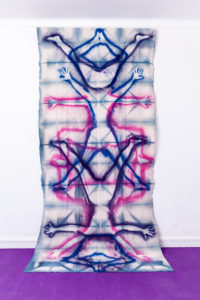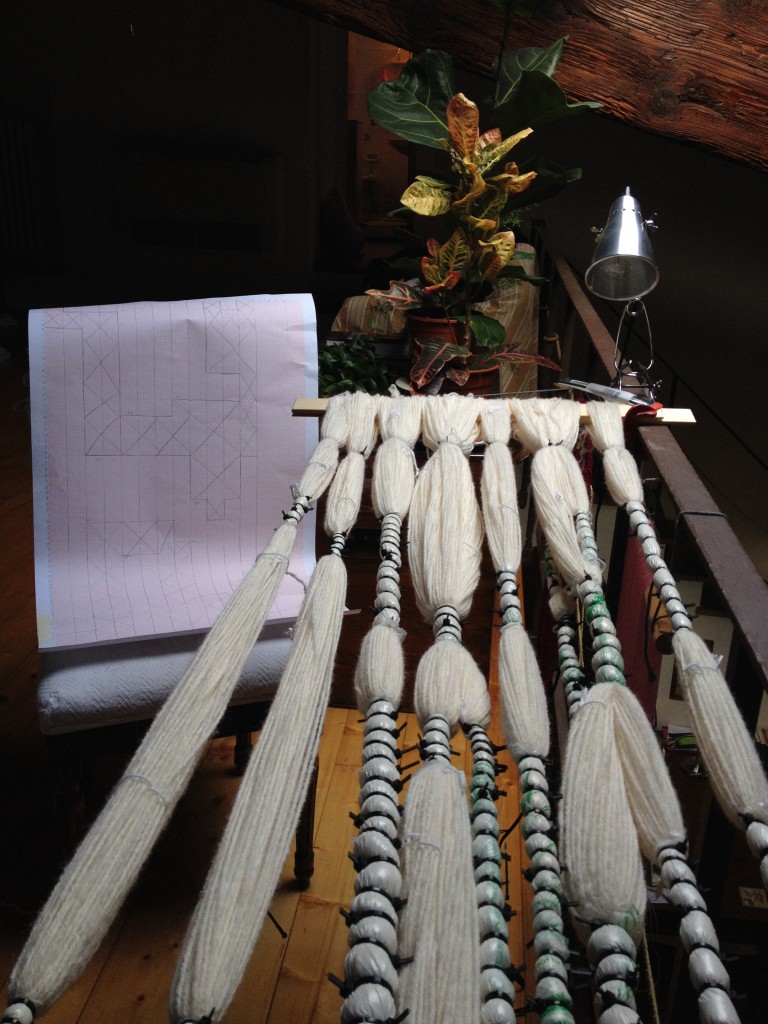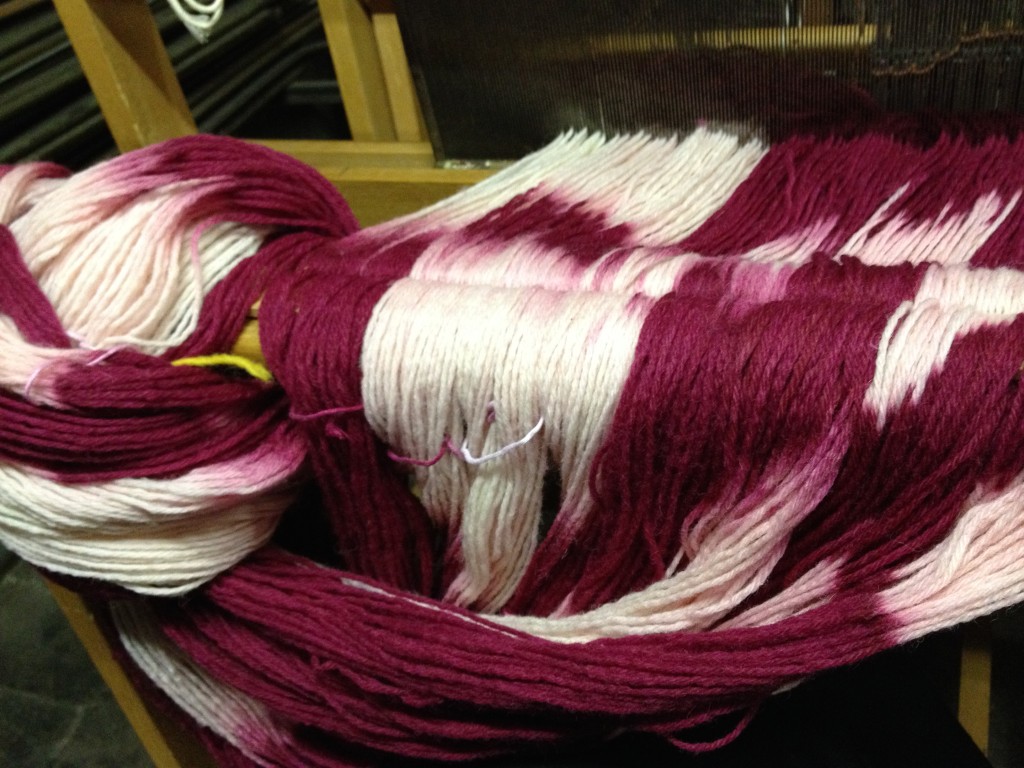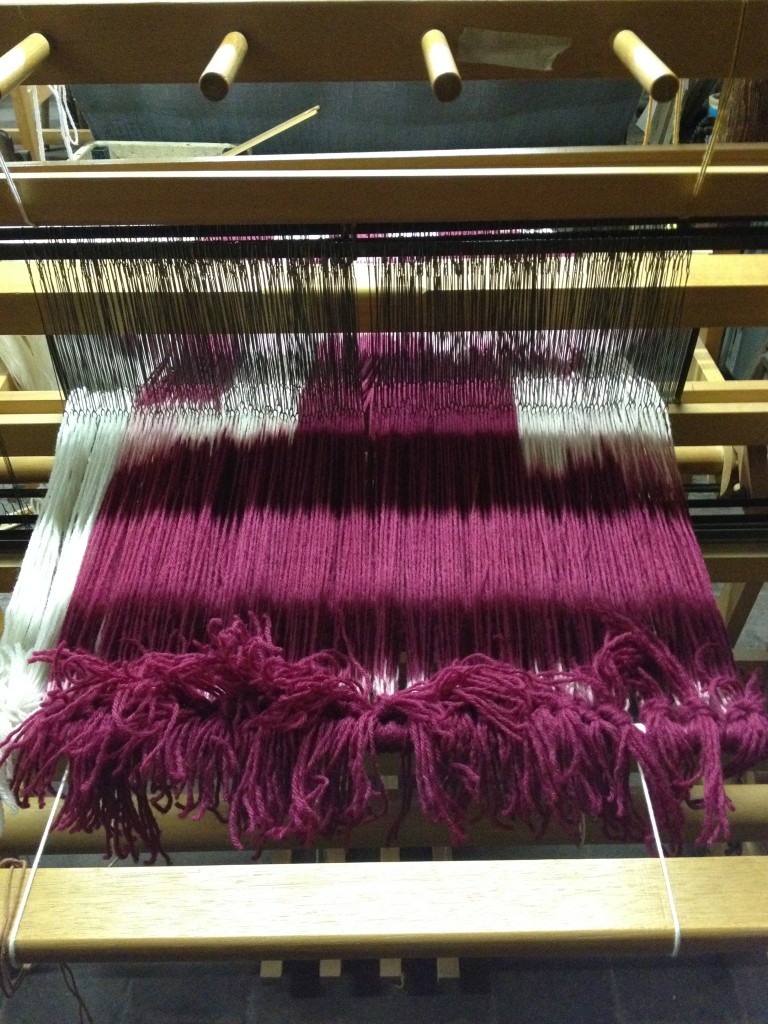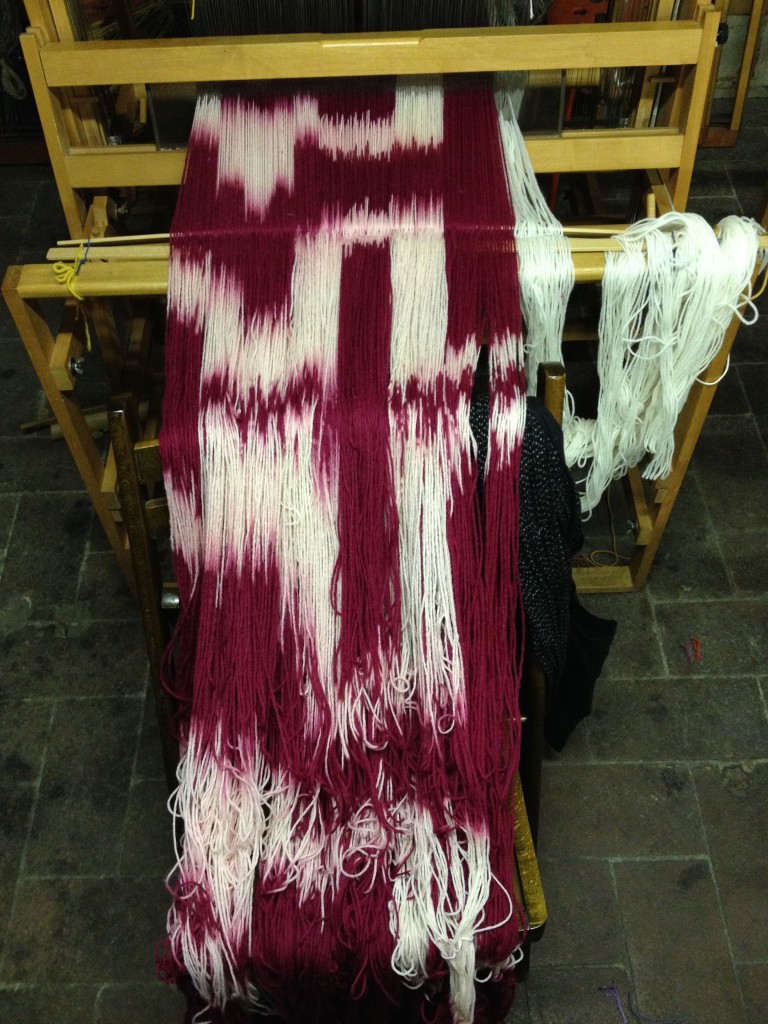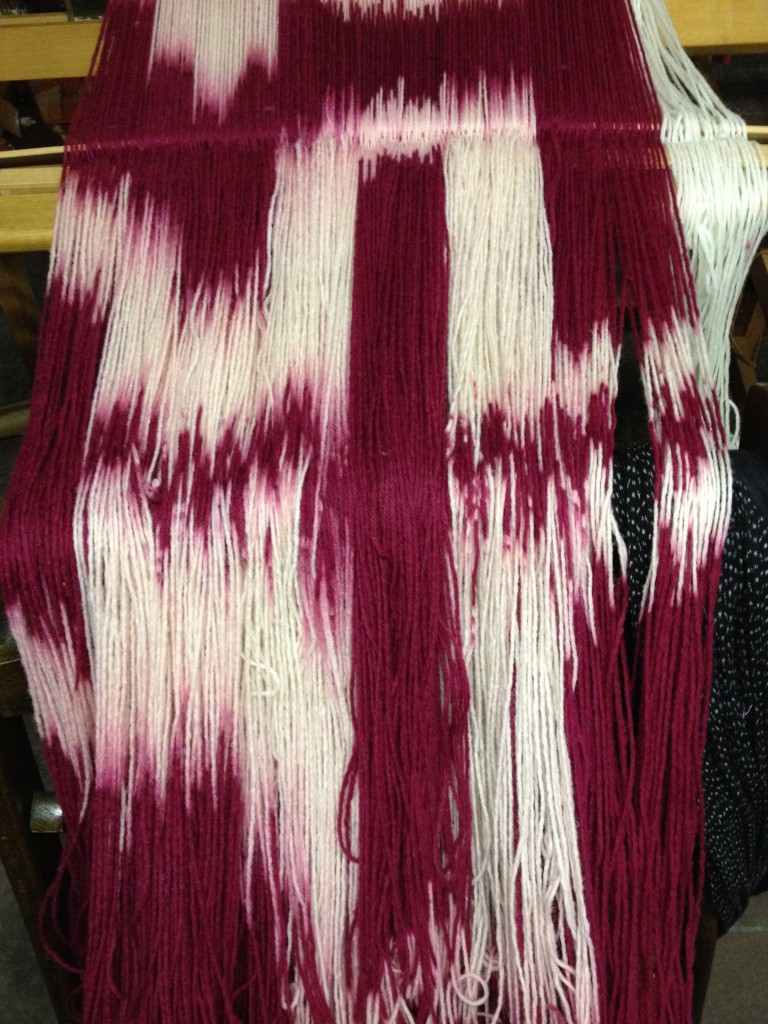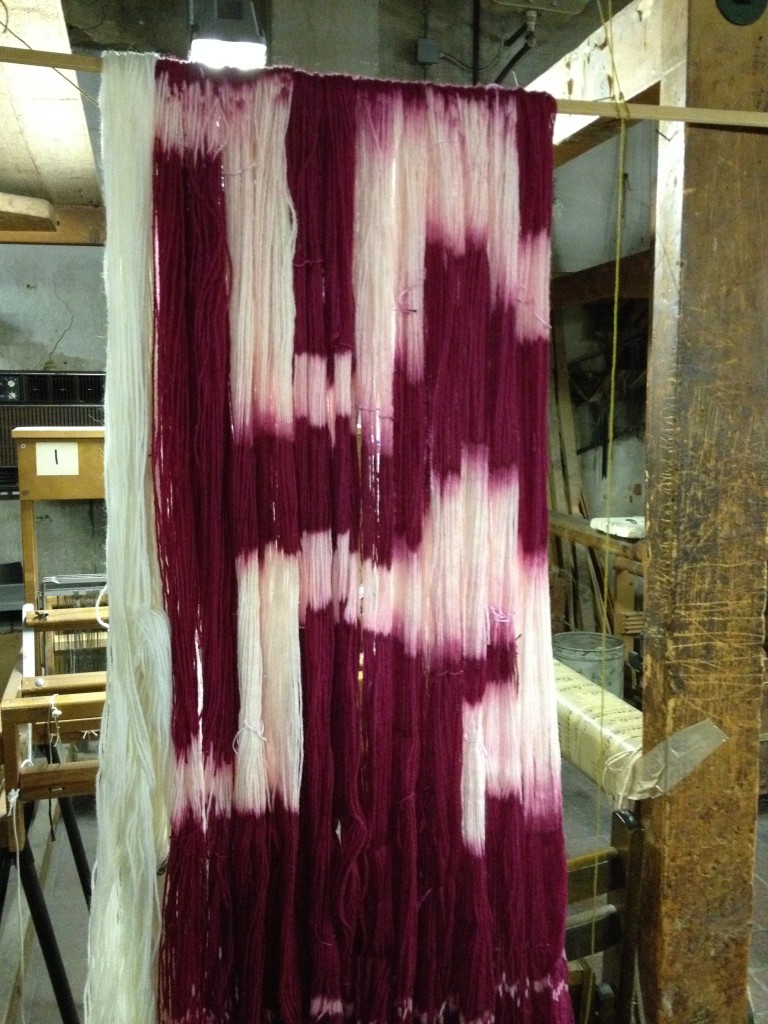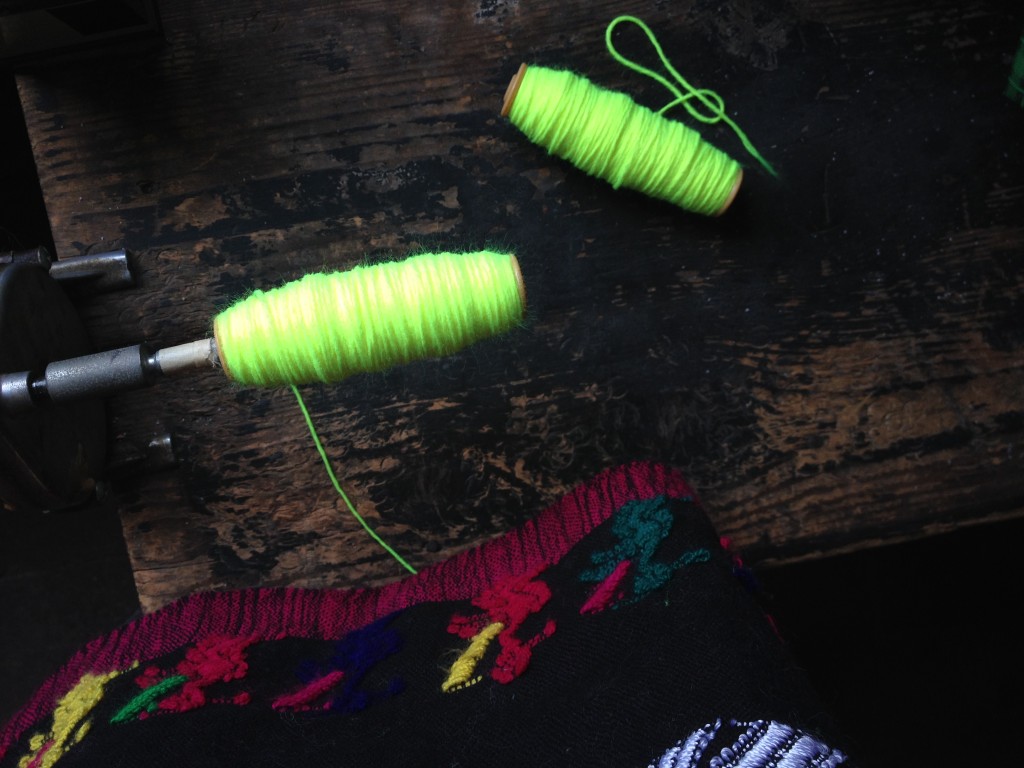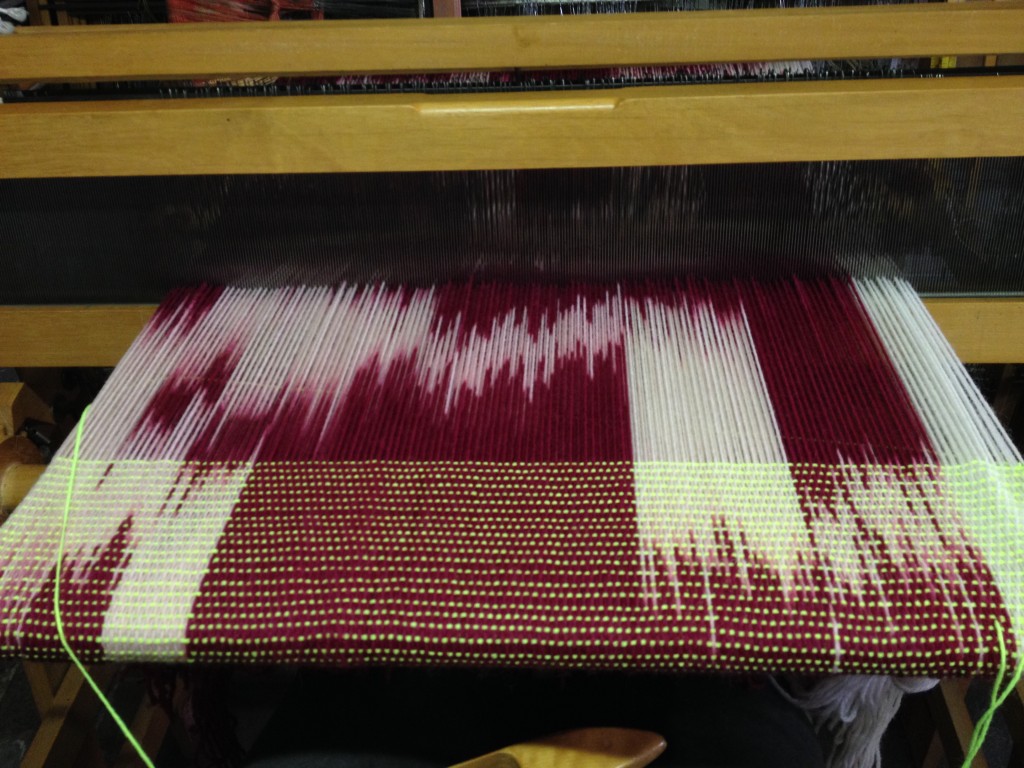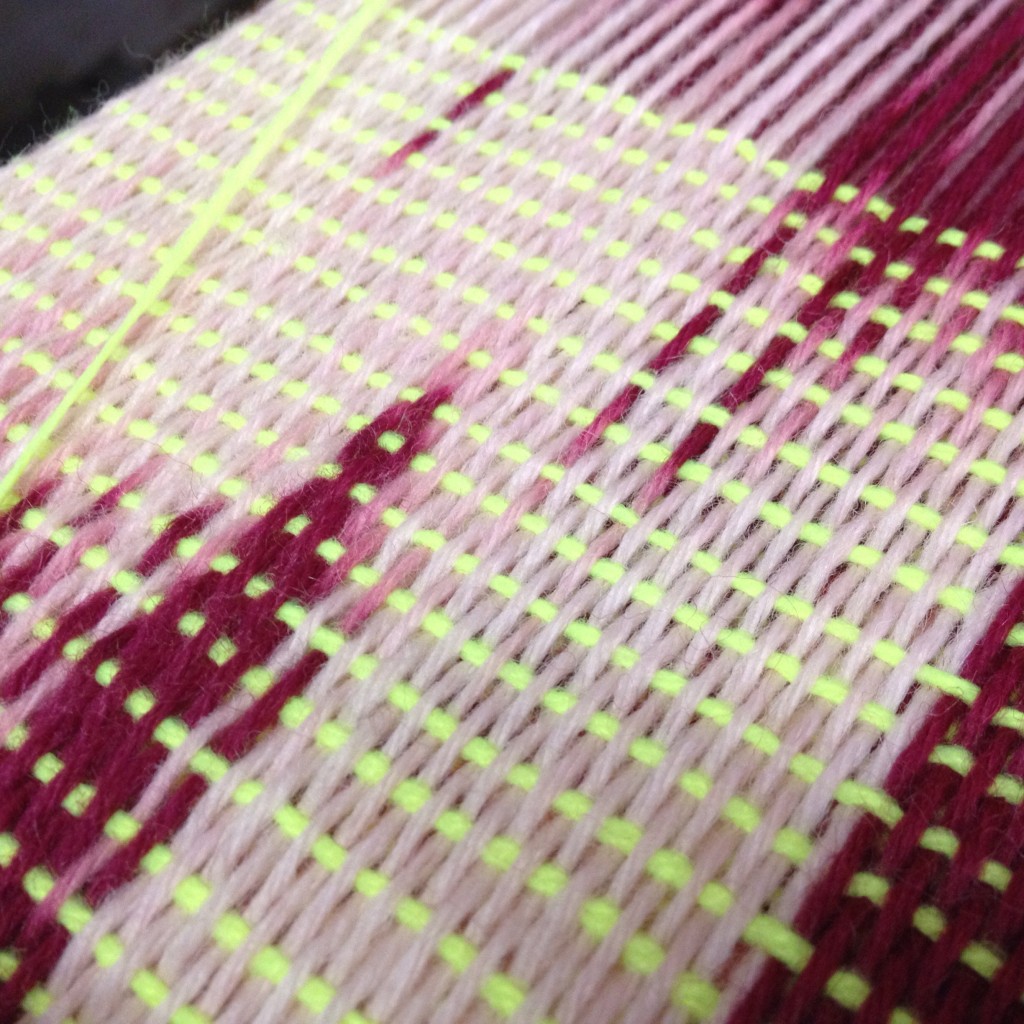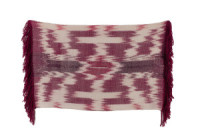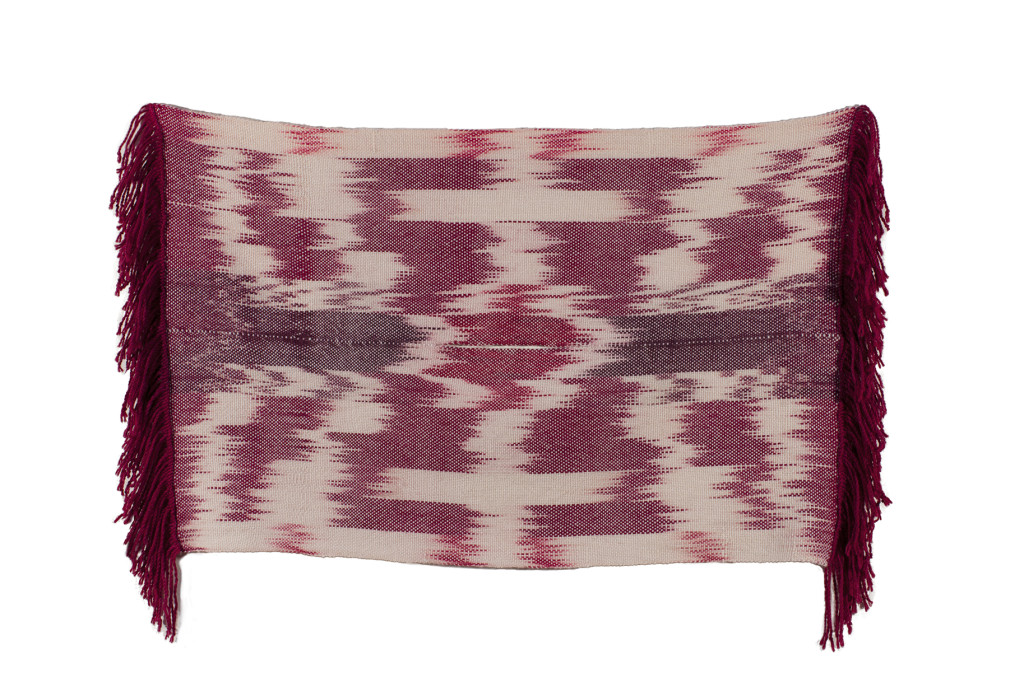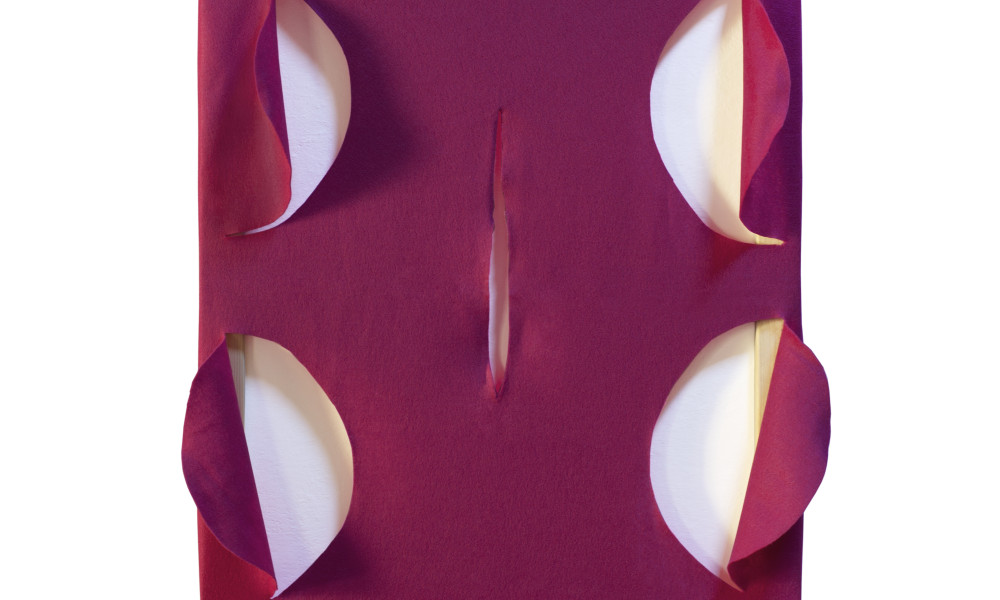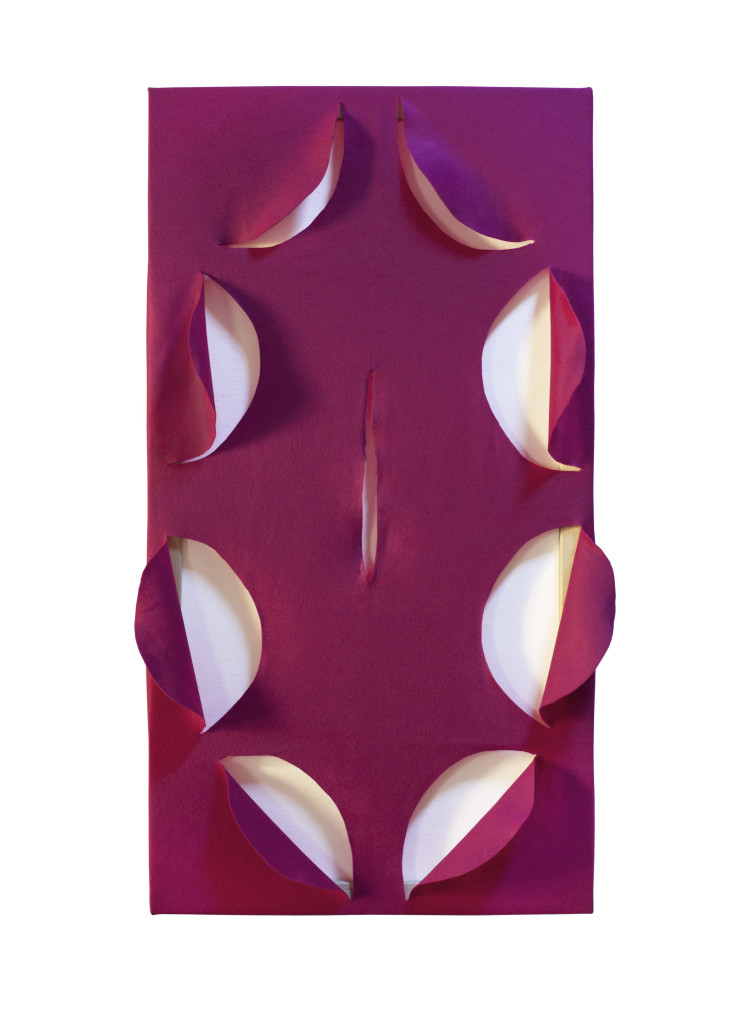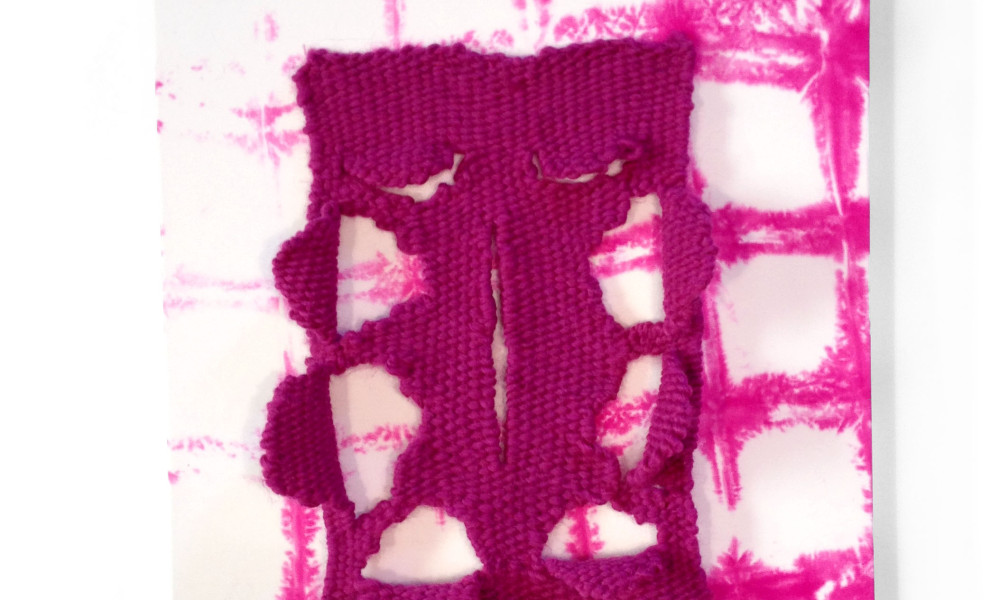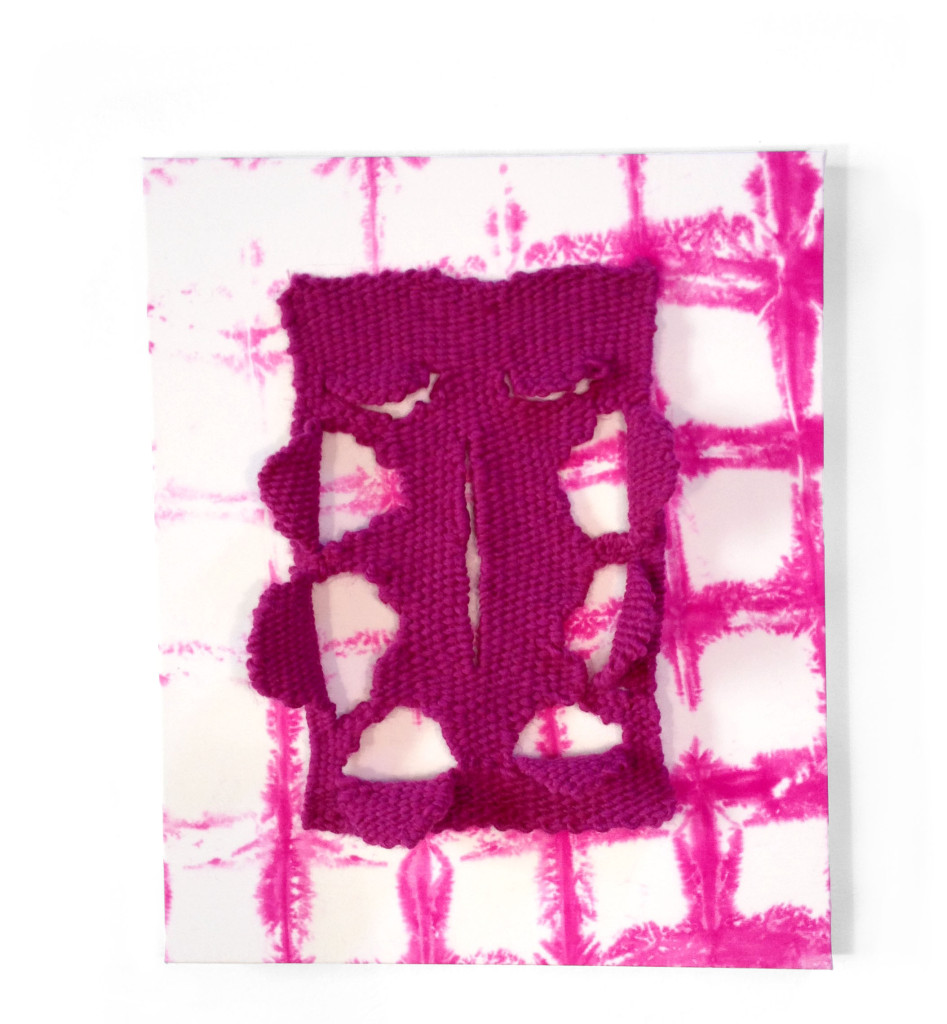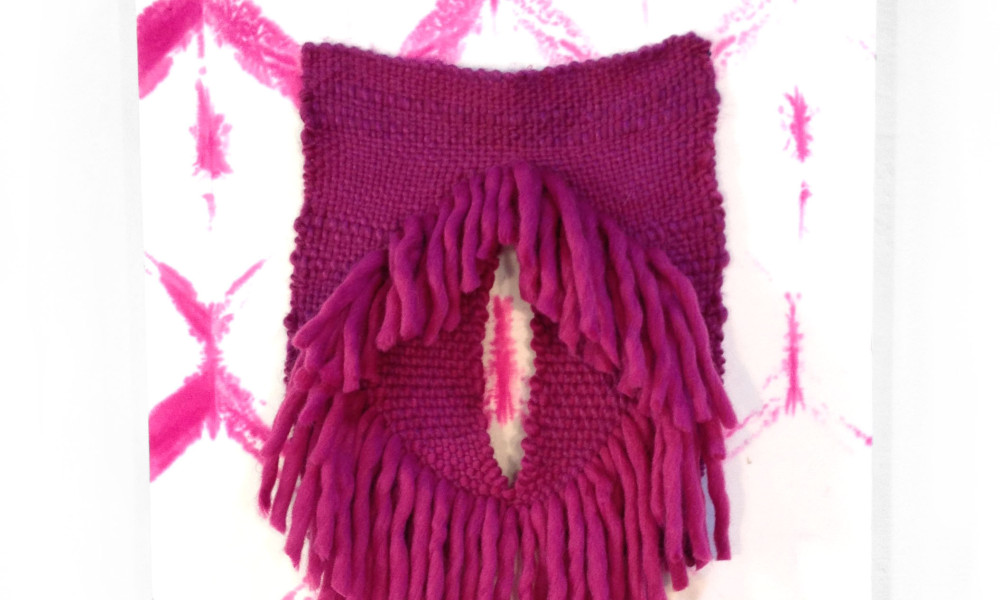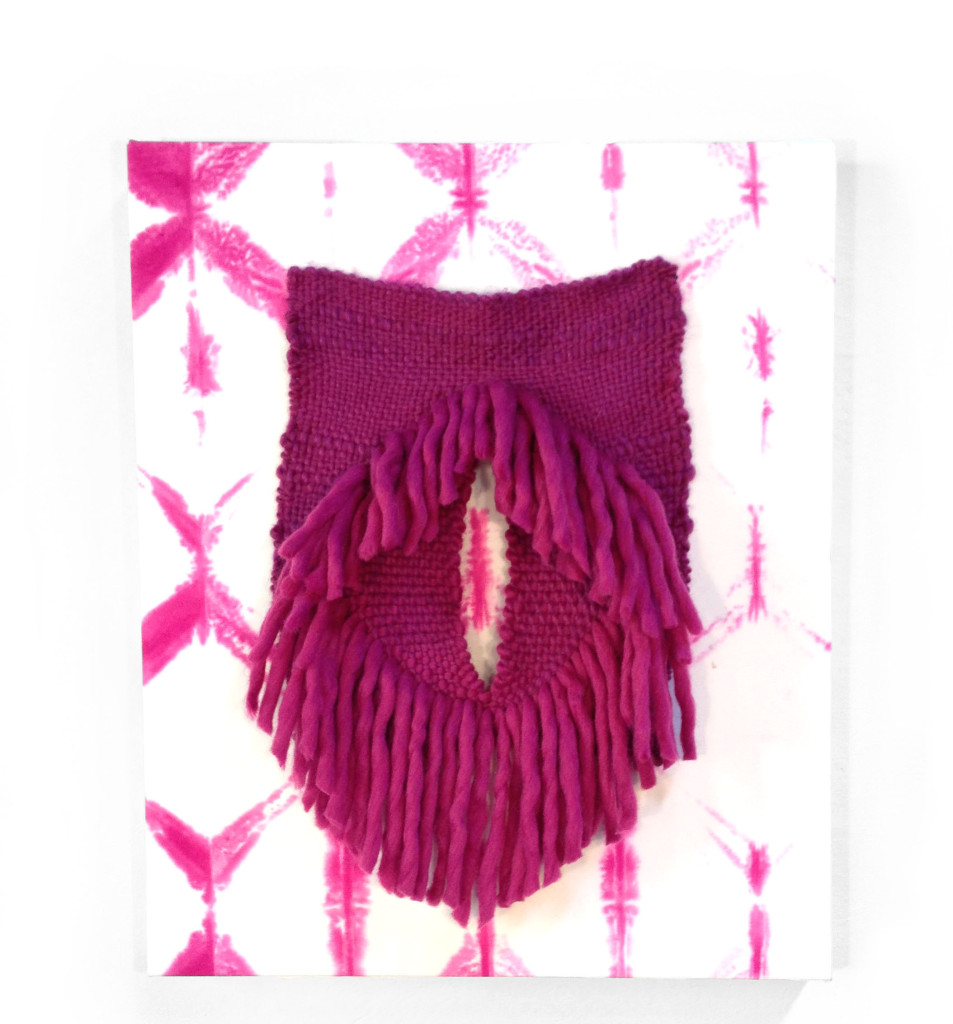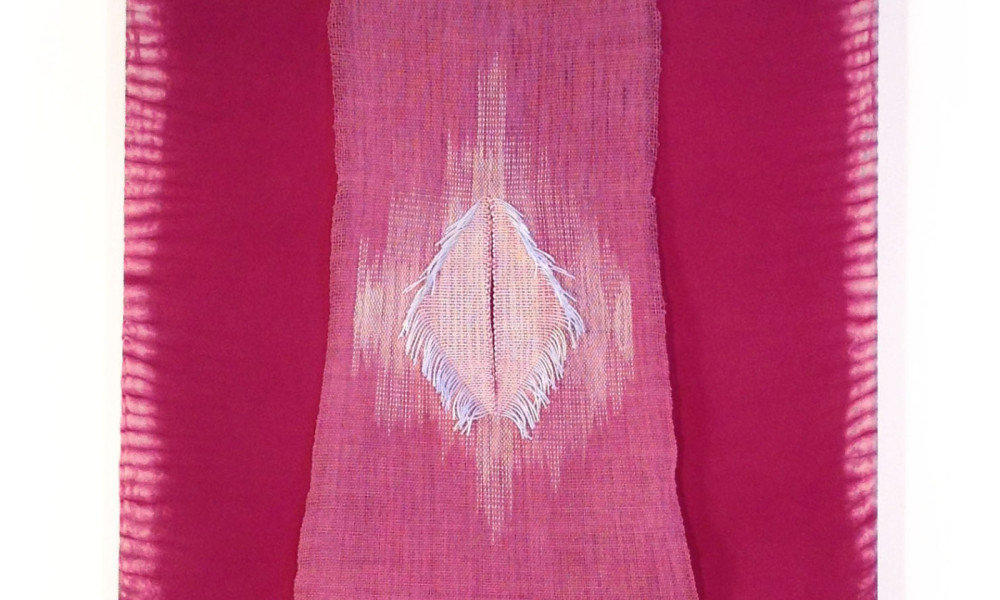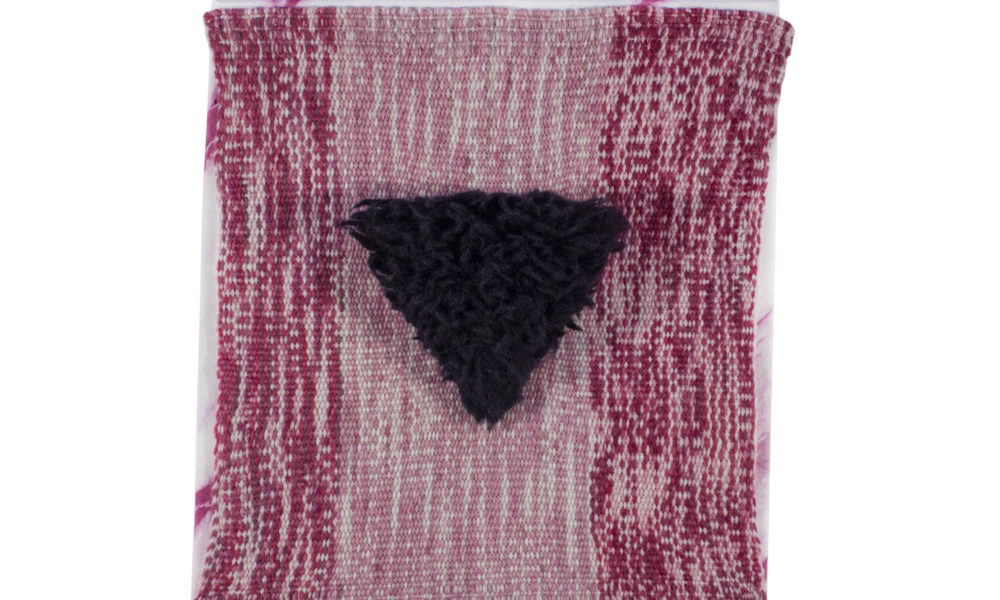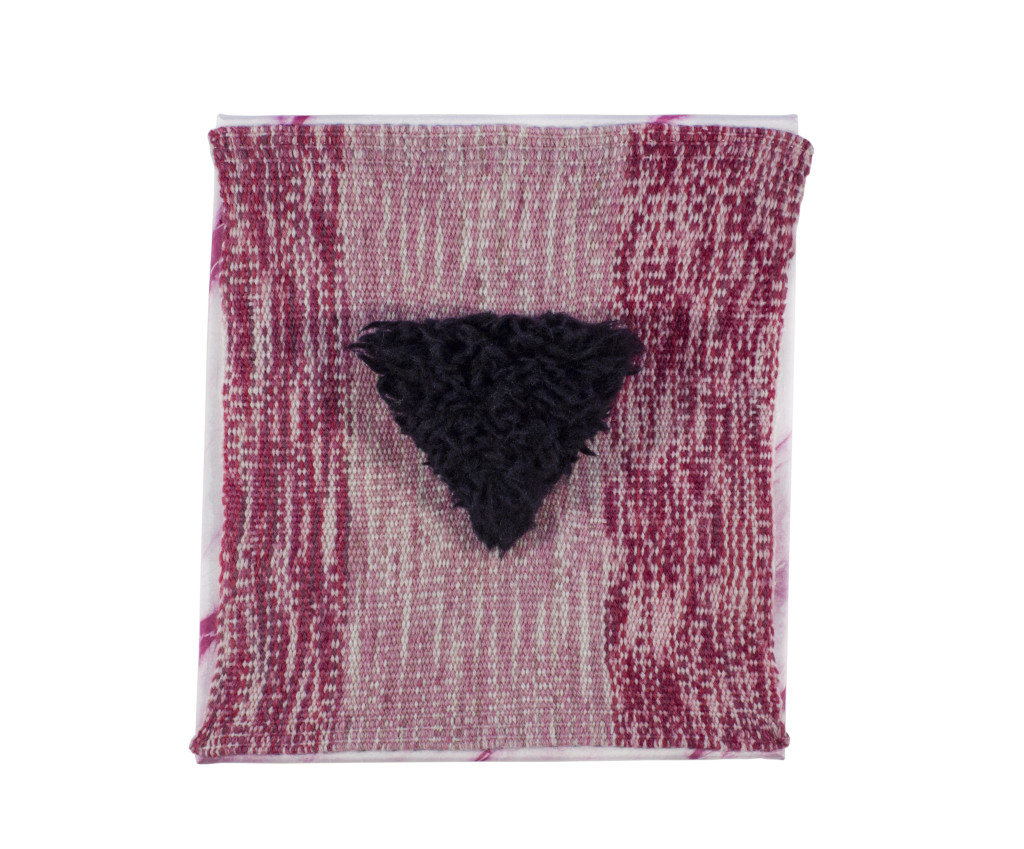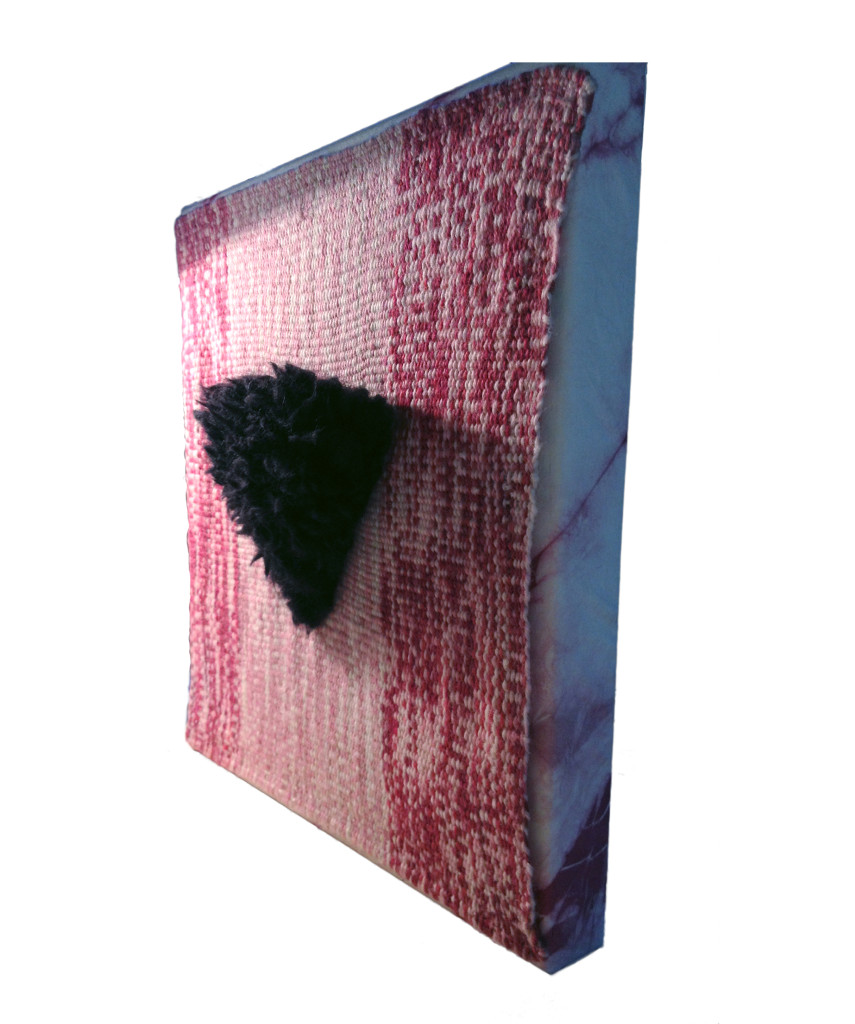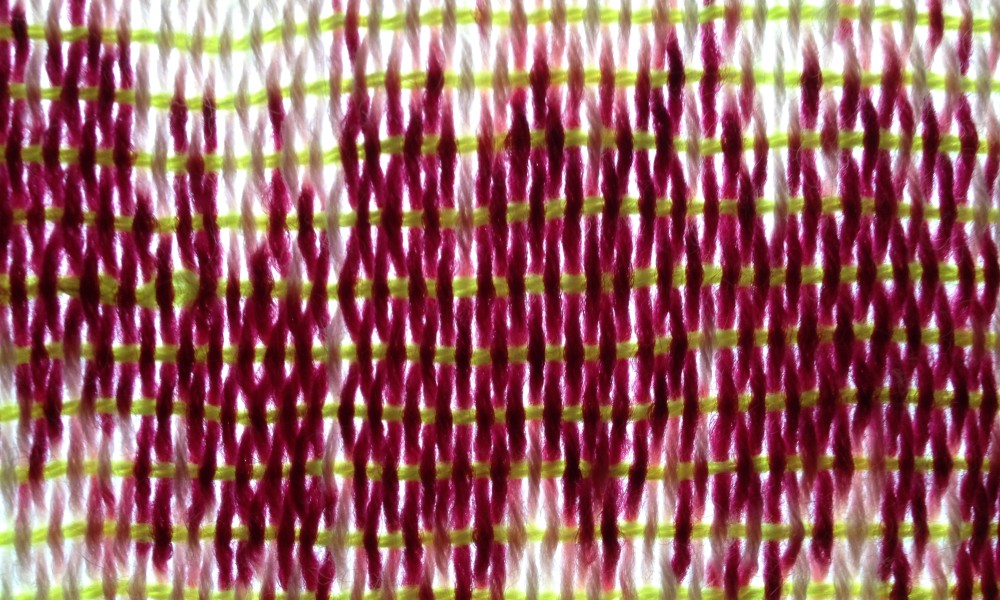
Pariendo Poncho
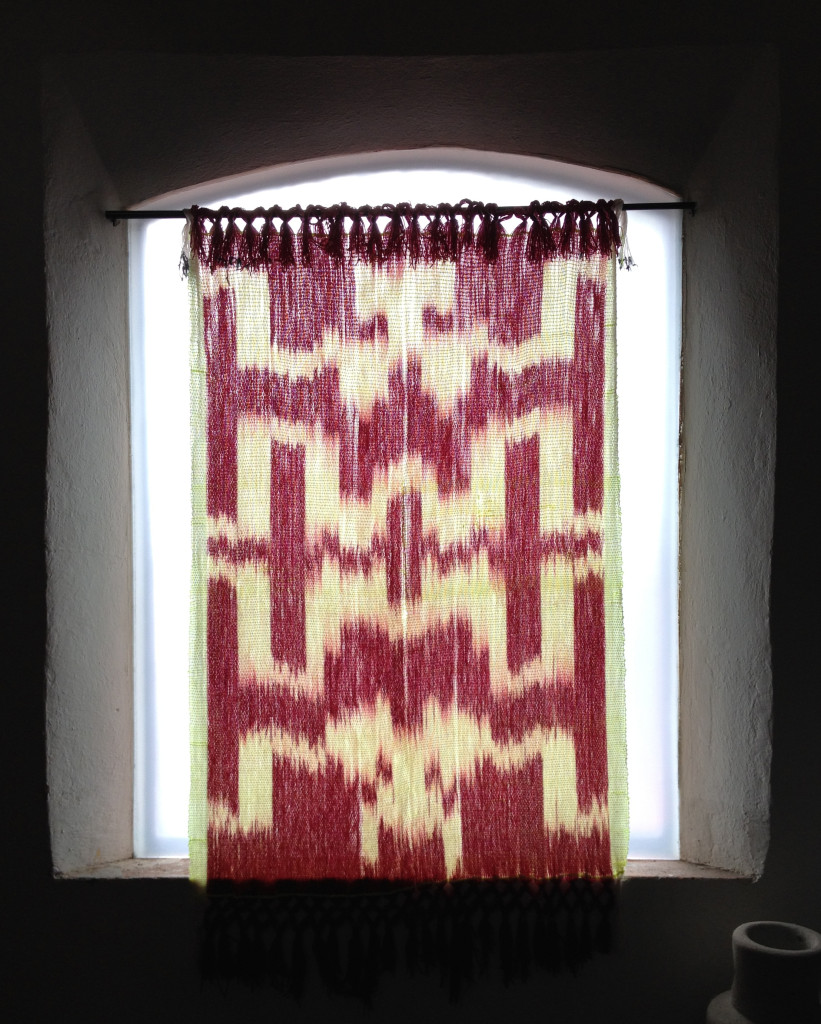
Pariendo Poncho, ikat cochineal-dyed wool, 2014
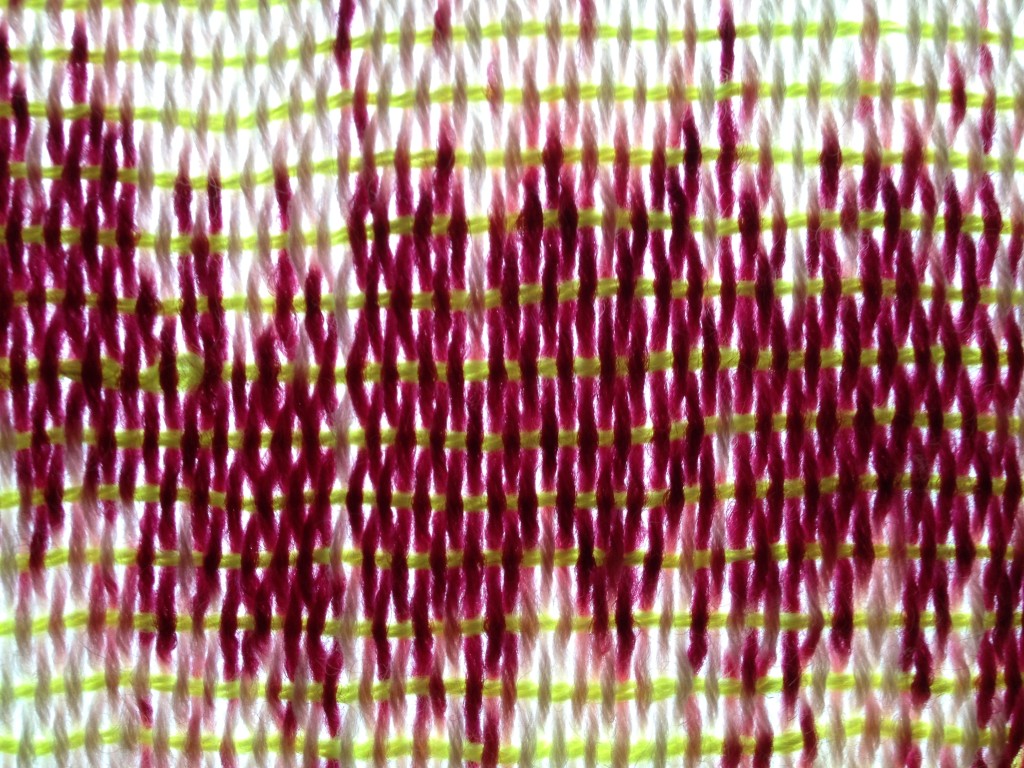
(Detail) Pariendo Poncho, ikat cochineal-dyed wool, 2014
This piece was ikat-dyed with cochineal on the warp threads and handwoven on a four-harness pedal loom. The weft is neon green acrylic thread. It was woven in double-cloth, leaving an opening in the center, in the way ponchos and sarapes are made.
Ikat is a resist dyeing process in which some areas of threads are bound before dyeing, protecting them from dye, so that when uncovered they retain the original color of the yarn. In this piece shapes were bound onto the warp threads before dyeing so that in the final piece white un-dyed figures appear on a cochineal-dyed ground.
The white shapes represent two mirrored female figures in squatting positions. The opening in the weaving, where the head would come through in the poncho, coincides with the genital areas of the figures represented, simulating a sort of birth process where the double figures give birth to the person wearing the poncho.
In the weaving process the ikat shape shifts slightly, rendering the image less geometric. The image appears slightly out of focus because the edges and borders become blurred. This process evokes movement and references the liquid aspect of the natural-dyeing process.

